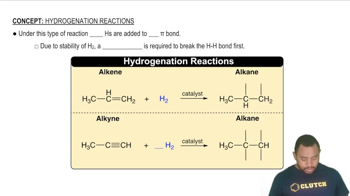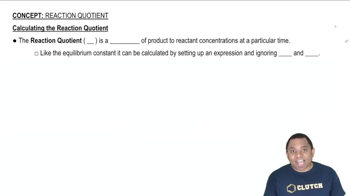Textbook Question
The equilibrium constant Kc for the gas-phase thermal decomposition of cyclopropane to propene is 1.0 ⨉105 at 500 K:
(a) What is the value of Kp at 500 K?
 Verified step by step guidance
Verified step by step guidance



The equilibrium constant Kc for the gas-phase thermal decomposition of cyclopropane to propene is 1.0 ⨉105 at 500 K:
(a) What is the value of Kp at 500 K?
The equilibrium constant Kc for the gas-phase thermal decomposition of cyclopropane to propene is 1.0 * 105 at 500 K:
(c) Can you alter the ratio of the two concentrations at equilibrium by adding cyclopropane or by decreasing the volume of the container? Explain.
Acetic acid tends to form dimers, (CH3CO2H2), because of hydrogen bonding: The equilibrium constant Kc for this reaction is 1.51⨉102 in benzene solution but only 3.7⨉10-2 in water solution. (b) Calculate the ratio of dimers to monomers for 0.100 M acetic acid in water.